SACRAMENTO — Just over a month after the first confirmed case of community spread of the novel coronavirus in the nation, California is showing signs of flattening the curve — and triumphing over the global pandemic.
In some ways, the novel coronavirus landed in California by design.
Less than two months ago, even as doctors were confirming a trickle of cases in patients who had recently traveled to the Chinese city of Wuhan, California accepted Boeing 747s full of Americans escaping the virus’ hotbed. By the time the newly repatriated wrapped up 14-day quarantines at a pair of Air Force bases in the Golden State, 200 more passengers from an infected cruise ship were headed to take their place.
The next wave came two weeks later, as another luxury liner carrying 3,500 people that had been denied entry at other ports docked in the San Francisco Bay. California was suddenly taking in Americans fleeing from across the globe, and a state of 40 million people seemed primed for a major outbreak.
But over a month after reporting the country’s first case of community spread and its first COVID-19 death, evidence is emerging that California has outperformed other states in slowing the pandemic.
Why has California had success where other smaller, less populated states haven’t?
According to doctors and lawmakers, California is benefitting from early lockdown orders given by its gutsy governor and local officials, a forward-thinking business sector and even a bit of chance and luck.
First to Lock Down
Accepting the repatriation flights and cruise ship passengers forced not just the state but local officials to confront the virus and prepare for its inevitable spread.
One week after the Grand Princess docked in Oakland, six San Francisco Bay Area counties issued a joint shelter-in-place order on March 16. The order was stricter than anything in place at the time in the nation, directing nearly 7 million people to remain at home and away from work unless they were deemed an “essential employee.”
Officials were certain the extent of the spread was larger than the 250 confirmed cases at the time and in a matter of days, Bay Area cities went radio silent.
“This is not the moment for half-measures. History will not forgive us for waiting an hour more,” San Jose Mayor Sam Liccardo said of what seemed like a radical approach at the time.
Seeking uniformity, Gov. Gavin Newsom followed three days later with the nation’s first statewide order.
“If we are to be criticized, let us be criticized for taking this moment seriously and for meeting this virus full force,” said the first-term Democrat.
Other states began to fall in line, such as New York and Louisiana which announced their orders three days later on March 22. And as the daily coronavirus reports come in, it’s becoming clearer that California’s three-day head start was significant.
Data show the disease has spread less and killed fewer people in the Golden State: As of April 9, California was reporting just 1 death per 100,000 residents, compared to 36 per 100,000 in New York and 15 per 100,000 for Louisiana. In a sign of progress, California this week freed up 500 ventilators from its inventory and sent them east to states in worse shape.
“I’m proud of our state and Gov. Newsom specifically for providing leadership on this issue,” said Assemblyman Joaquin Arambula, a Democrat and emergency room doctor.
To bolster the shelter-in-place order and boost efforts to stockpile medical equipment, Arambula and the Legislature handed Newsom chief control over a $1 billion pandemic emergency fund. Newsom has used the fund to temporarily house homeless Californians in hotels, aid struggling hospitals and businesses, and reach an agreement with Chinese manufacturers for 200 million masks per month.
The massive sum of taxpayer dollars has been well spent, Arambula contends.
“What we’ve seen them spend the money on has significantly helped us to flatten that curve,” Arambula said.
Recent projections by the Institute for Health Metrics and Evaluation at the University of Washington predict California’s death toll on Aug. 4 will reach 1,611, New York 13,307 and Louisiana 946.
“Patterns show that social distancing does matter and is effective,” said Stephen Hawes, professor and chairman at the University of Washington’s Department of Epidemiology. “These actions do matter; these policies by the local and state officials matter.”
On Friday, California’s secretary for the health and human services agency relayed the success of the shelter-in-place order to reporters. Scrolling through a series of graphs compiled from mobile data, Dr. Mark Ghaly said the data shows a firm drop in activity county by county.
“We are holding on to the bottom part of the model,” Ghaly said. “This a point of pride for Californians that we’ve done so well.”
Ghaly said the projected peak in cases may be lower than once expected — but only if Californians shun the notion to celebrate early and remain at home.
Leading by example
Such a sweeping public health mandate can only work if deployed by businesses and residents, says state Sen. Richard Pan.
Pan, a pediatrician who holds a master’s degree in public health from Harvard, believes the decisions made by Silicon Valley employers and others played a role in preventing spread of the coronavirus.
Santa Clara County, home of Silicon Valley, was the first identified hotspot in California and as of Thursday had nearly 1,400 confirmed cases and 47 deaths. As cases multiplied toward the end of February and early March, tech giants like Google and Apple directed employees to work from home.
“We have to appreciate the fact these companies recognized early they should send people home,” said Pan, D-Sacramento. “Businesses and people didn’t wait until the state said, ‘Please stay at home.’”
It is only fitting Silicon Valley companies were able to digest the trends and data coming from places like China and Italy and act swiftly despite the obvious economic risk according to Robert Wood, who teaches strategic management at California State University, San Jose.
“The high-tech businesses in some cases were a little ahead and completely willing to go along,” Wood said.
Silicon Valley businesses have contributed in other ways by refurbishing ventilators, covering meal and room stipends for newly hired front-line medical workers and providing free tablets and internet access for schoolchildren. Tech companies are also helping to improve testing capabilities as well as new telehealth technology.
To drive home the magnitude of the situation to Californians, after approving the $1 billion pandemic fund the Legislature quickly left Sacramento and returned to their districts. The Legislature is on recess until at least May 4, and Pan said the capitol’s hallways and committee rooms will remain quiet until it’s safe for employees and the public.
“We need to model the kind of behavior that is necessary to slow the spread of this virus,” Pan said of the extended recess. “Do you want to risk your life to come show up in a hearing room? We don’t want to put people in those kinds of situations.”
Underlying factors
While California deserves praise for its proactive lockdowns and success obtaining ventilators and medical supplies, experts say other factors are at play. These include the physical makeup of its cities and other explanations yet to be identified due to a lack of testing.
Outside of San Francisco, California’s largest cities are less dense than places like New York City, Jersey City and Chicago, all of which have seen high amounts of Covid-19 cases. California does have the fourth most confirmed cases, but they have been spread out among its various large counties, signaling the likelihood California is benefitting from urban planning decisions made long ago.
“Certainly in terms of infectious diseases, past history suggests urban areas with high density are where a lot of transmission occurs,” said Hawes, the University of Washington professor. “I think we’re seeing that with COVID as well.”
California has apparently exceeded early benchmarks in terms of procuring supplies with its recent donations to the national stockpile, but its testing response for the deadly virus has lagged. As has been the case in most states, California has struggled to find, administer and process tests, making it hard to pinpoint how many people have been infected.
To speed up testing, Newsom this week announced a testing task force and urged California universities to continue pursuing new methods. During one of his briefings, Newsom touted a promising method being developed at Stanford University that tests for antibodies to the coronavirus.
By testing for antibodies and not the virus with standard nasal swab tests, researchers hope a simple finger prick will reveal whether someone has recovered from the coronavirus. The goal is to find a reliable test and make it widely available, so public health officials can get a better grasp on how many people may have had and beat the virus without knowing it.
The university tested over 3,200 people last weekend in Santa Clara and hopes to release findings this week. Similar antibody methods are being tried across the country, including a push to test all residents of a Colorado County.
Hawes says reliable antibody tests would go a long way in eliminating some of the unknowns still surrounding the disease. Better testing could help doctors determine if recovered patients develop immunity and how long it lasts, and why some infected people have symptoms and others don’t.
“There’s not a lot of screening going on and testing of people that aren’t sick,” Hawes said. “Once those are developed and we can start doing antibody testing, that will really help.”
Chance and luck
Experts roundly agree California’s approach has been effective but warned victory over the coronavirus can’t be claimed until more testing is done. Until then, the doctors reiterate staying home and maintaining a normal routine is the best prevention method.
“This is like any other virus — if you’re sleeping well, if you’re eating well, if you’re getting exercise, those things can help your immune system in a general way,” Hawes said. “Those things can’t hurt.”
Like with any infectious disease, the epidemiologist notes there’s some chance and luck involved with the coronavirus. Because people can carry the disease without showing symptoms, limiting personal interactions remains the best strategy.
There’s also the theory that prevalent social norms contributed to Californians’ willingness to completely shut down society in the name of science.
Wood, the San Jose State professor, said Silicon Valley has a highly educated population and that it embraced scientists’ and doctors’ advice.
“We’re an intellectual center. Most of the well-educated people I know quickly believed that this story was real,” he said.
With new hospitalization and ICU patient rates slowing to the low single digits this week, California has become the hub of the country’s optimism regarding the pandemic. In two months, state has gone from taking in hundreds of people from the virus’ origin to sharing its bounty of ventilators and masks to relive the rest of the country’s supply shortage.
California has even been able to extract compliments from its harshest and stingiest critic.
“I must tell you, Gavin Newsom has been gracious — Los Angeles, California, the job we’ve done, and all of California,” President Donald Trump said during a recent briefing.
— By Nick Cahill, CNS
Like this:
Like Loading...
Related



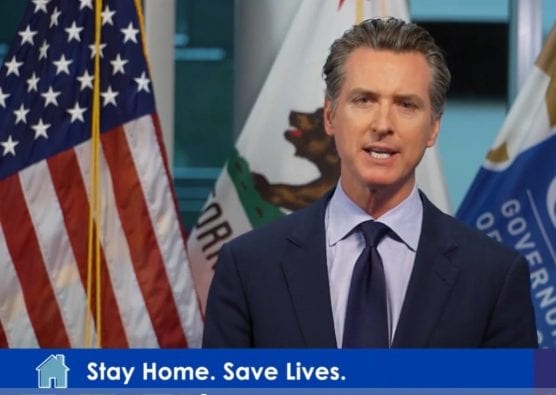

 Tweet This
Tweet This Facebook
Facebook Digg This
Digg This Bookmark
Bookmark Stumble
Stumble RSS
RSS




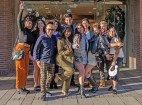
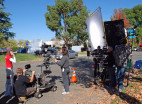
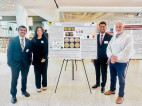

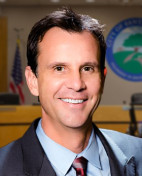



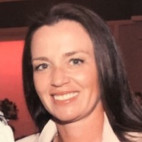

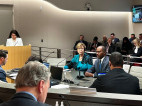









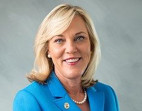

REAL NAMES ONLY: All posters must use their real individual or business name. This applies equally to Twitter account holders who use a nickname.
0 Comments
You can be the first one to leave a comment.